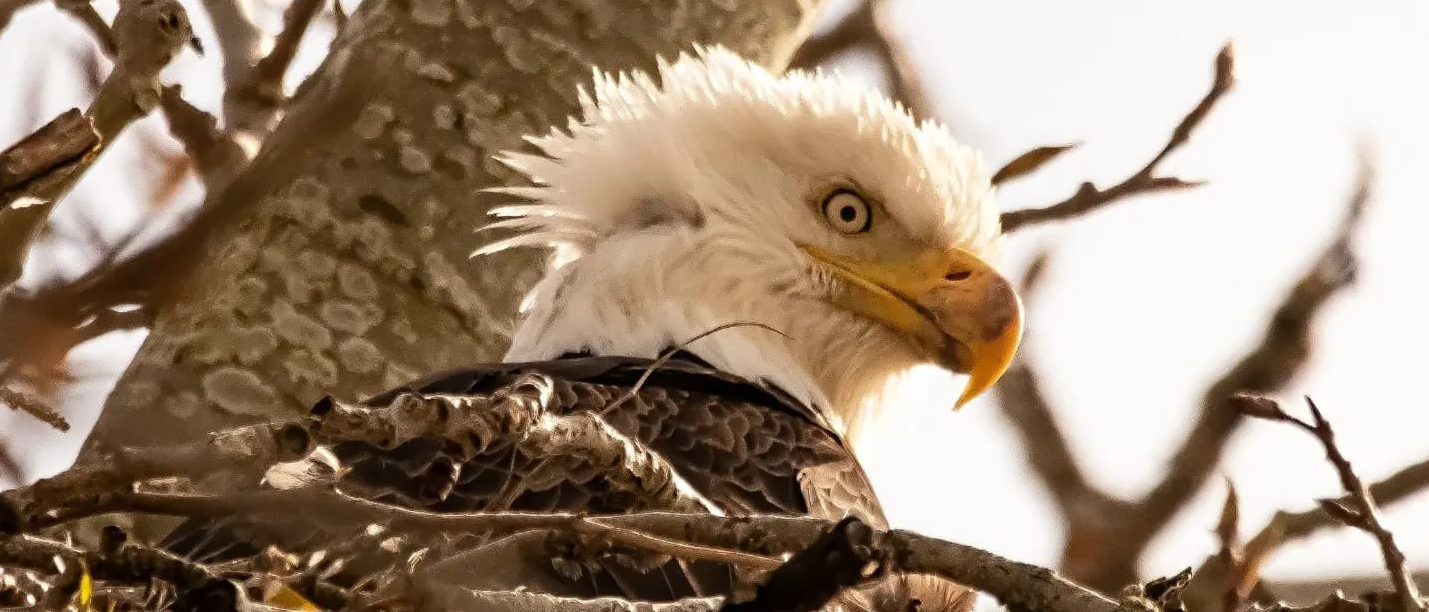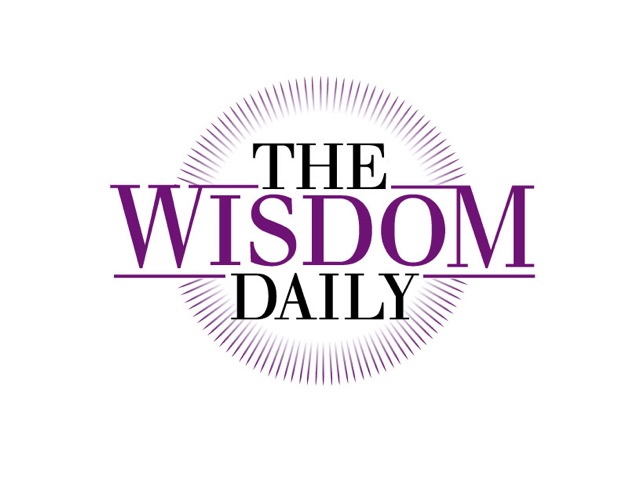Rabbi Laura Duhan Kaplan is Director of Inter-religious Studies at the Vancouver School of Theology, a faculty member at ALEPH Ordination Programs, Rabbi Emerita of Or Shalom Synagogue, and Professor Emerita of Philosophy at the University of North Carolina at Charlotte. Follow her blog at www.sophiastreet.com.
God, Our Mother Eagle

Bald eagles are everywhere in my Pacific Northwest region. On my street, brave eagles try (unsuccessfully) to eat baby crows. Just across the river, eagle couples nest in the high trees. In winter, migratory eagles feast on dying salmon. In summer, resident eagles party at the landfill. Still, I never get tired of eagles. When I see one soar, my own soul soars. My mood lifts, and I feel a hint of God’s presence.
The Torah ends and begins with the image of God as an eagle. It’s there in Moses’ last instruction to the Israelites (Parshat Ha’azinu, Deut. 32:11). God, says Moses, found the Israelites in a wild and empty place. Then, like an eagle tending its nest, God hovered over them. The same image appears in the creation story (Parshat Bereisheet, Gen 1:2). When God first created heaven and earth, the earth was chaotic and empty. And the spirit of God hovered over the deep waters. Now that I know the Torah’s end, I read the beginning differently. God–metaphorically speaking, of course–soars above the wilderness. She lands on her nest and hovers over it. There, she incubates the world.
The Bible is important to many North Americans. And the bald eagle is an American national symbol. So, you might think that Americans would treat eagles with respect. But only 50 years ago, the North American eagle population was devastated by the agricultural pesticide DDT. Through the food chain, eagles ingested high concentrations of toxins. The poisons affected mother eagles’ reproductive systems. Eagles laid eggs so thin they broke when a parent bird sat on them. Mother eagles who wanted babies found their mates and built their nests failed over and over again. Eagle populations shrank. Human environmental activists worked for two decades to protect them. And now eagles have come back, one generation at a time.
Our human food systems continue to threaten biodiversity. Thirteen percent of the world’s animal and plant species are at risk (UNEP). The Mother of the World, I imagine, weeps as the eggs in her nest crack, one by one. But she does not give up. Instead, she sends messengers to catch our attention. Sometimes, she sends a bald eagle. “With my eagle eye,” it says, “I have a broad view of the world. Your human community is important, but try to see it in context. You depend on all these species around you. And you can learn to pay better attention to them. After all, you mobilized to save me!”
There’s no escaping the eagle’s message. Our Torah begins with it and ends with it. Taking on an environmental issue is an important human responsibility. But no one can do it alone, and no one can do it all. As Rabbi Tarfon, a 2nd-century Jewish sage, says, “It’s not on you to finish the work, but you’re not free to avoid it, either. … The reward for the righteous is the future!” (Pirkei Avot 2:16).
Photo: Richard Topping. For more about eagles in Torah, see Laura Duhan-Kaplan, Mouth of the Donkey: Re-imagining Biblical Animals (Cascade, 2021).

